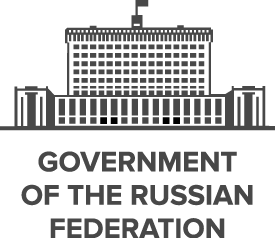Founded in the 12th century, the Principality of Muscovy was able to emerge from over 200 years of Mongol domination (13th-15th centuries) and to gradually conquer and absorb surrounding principalities. In the early 17th century, a new ROMANOV Dynasty continued this policy of expansion across Siberia to the Pacific. Under PETER I (ruled 1682-1725), hegemony was extended to the Baltic Sea and the country was renamed the Russian Empire. During the 19th century, more territorial acquisitions were made in Europe and Asia. Defeat in the Russo-Japanese War of 1904-05 contributed to the Revolution of 1905, which resulted in the formation of a parliament and other reforms. Repeated devastating defeats of the Russian army in World War I led to widespread rioting in the major cities of the Russian Empire and to the overthrow in 1917 of the imperial household. The communists under Vladimir LENIN seized power soon after and formed the USSR. The brutal rule of Iosif STALIN (1928-53) strengthened communist rule and Russian dominance of the Soviet Union at a cost of tens of millions of lives. After defeating Germany in World War II as part of an alliance with the US (1939-1945), the USSR expanded its territory and influence in Eastern Europe and emerged as a global power. The USSR was the principal adversary of the US during the Cold War (1947-1991). The Soviet economy and society stagnated in the decades following Stalin’s rule, until General Secretary Mikhail GORBACHEV (1985-91) introduced glasnost (openness) and perestroika (restructuring) in an attempt to modernize communism, but his initiatives inadvertently released forces that by December 1991 splintered the USSR into Russia and 14 other independent republics.
Following economic and political turmoil during President Boris YELTSIN's term (1991-99), Russia shifted toward a centralized authoritarian state under the leadership of President Vladimir PUTIN (2000-2008, 2012-present) in which the regime seeks to legitimize its rule through managed elections, populist appeals, a foreign policy focused on enhancing the country's geopolitical influence, and commodity-based economic growth. Russia faces a largely subdued rebel movement in Chechnya and some other surrounding regions, although violence still occurs throughout the North Caucasus.
Russia is a semi-presidential federation.
Members:
Resources
Displaying 736 - 740 of 1046Regional Law No. 1609-OZ “On particularly precious agricultural land”.
The scope of this Regional Law shall be to insert particularly precious agricultural land into the list of land areas that cannot be used for other purposes.
Regional Law No. 32 amending Regional Law No. 170 “On turnover and land-use planning of agricultural land”.
Article 2 shall be amended to add the following wording: “Minimum land area of newly consolidated land plot of agricultural land parcelled from shared ownership shall be equal to land share on account of which the aforesaid land plot is parcelled”.
Amends: Regional Law No. 170 “On turnover and land-use planning of agricultural land”. (2012)
Regional Law No. 1751-ZRK “On apiculture”.
The scope of this Regional Law shall be to set forth the conditions for the breeding, keeping and protection of bees, and also for protecting legal rights and interests of natural and legal persons carrying out apiculture. State support to apiculture shall be granted in accordance with regional programmes related to state support of agricultural activity.
Regional Law No. 552-OZ “On allotment of public or municipal land plots free of charge to citizens with three or more children”.
This Regional Law regulates the issues of once-only allotment of public or municipal land plots free of charge to citizens with three or more children for subsidiary smallholding and horticulture. It shall be applicable to persons having three or more children under 18 years of age and residing on the regional territory. Minimum agricultural land area for once-only free of charge allotment shall be 0,02 – 0,06 ha, and maximum agricultural land area for once-only free of charge allotment shall be 0,1 – 2,5 ha.
Order No. 648 of the Ministry of Economic Development validating the Regulation on the modalities of formation and release of information on sites subject to state cadastre evaluation.
This Order establishes the modalities of formation and release of information on sites subject to state cadastre evaluation and, in particular, valuation of urban land plots under edifices.


